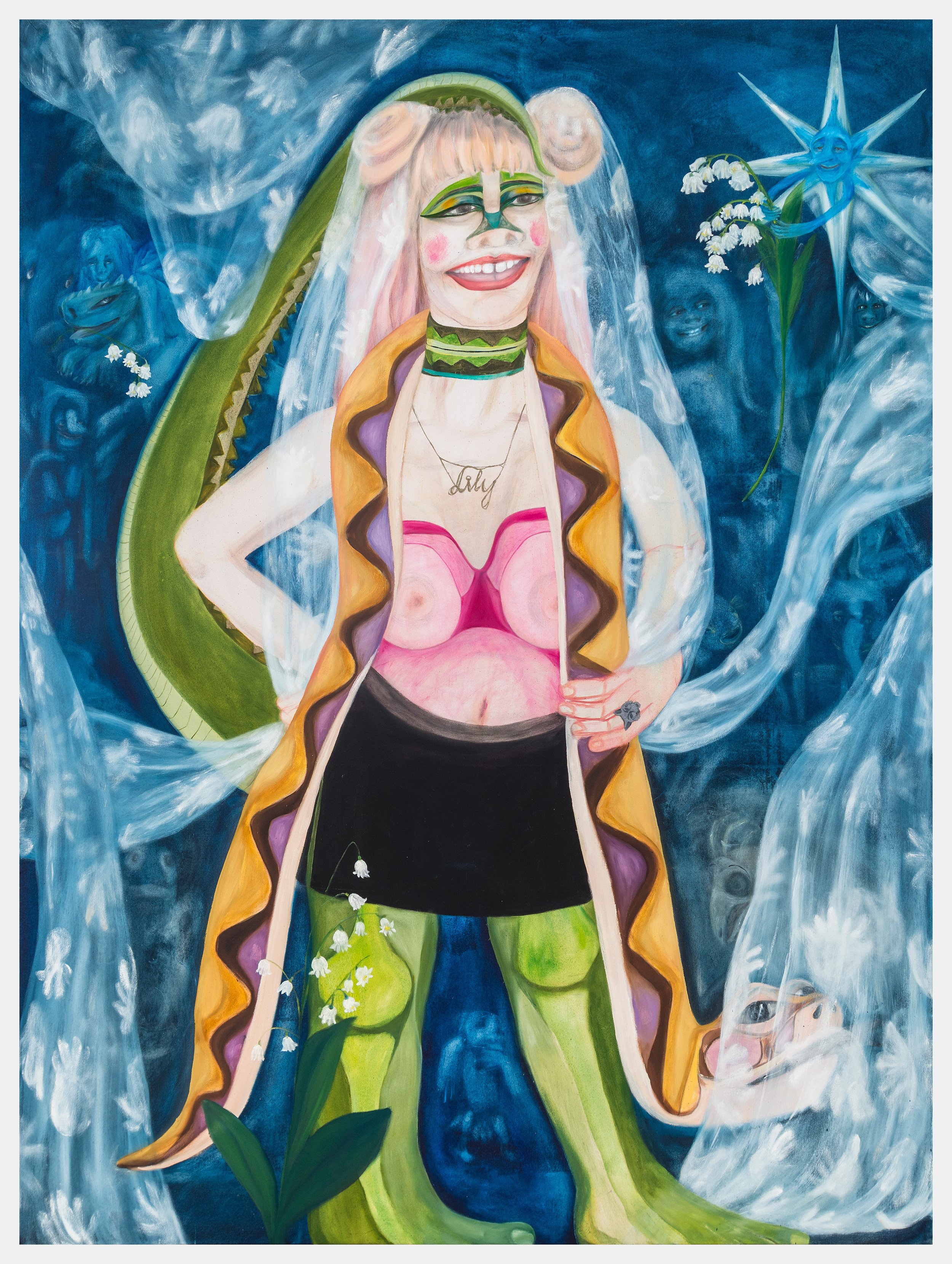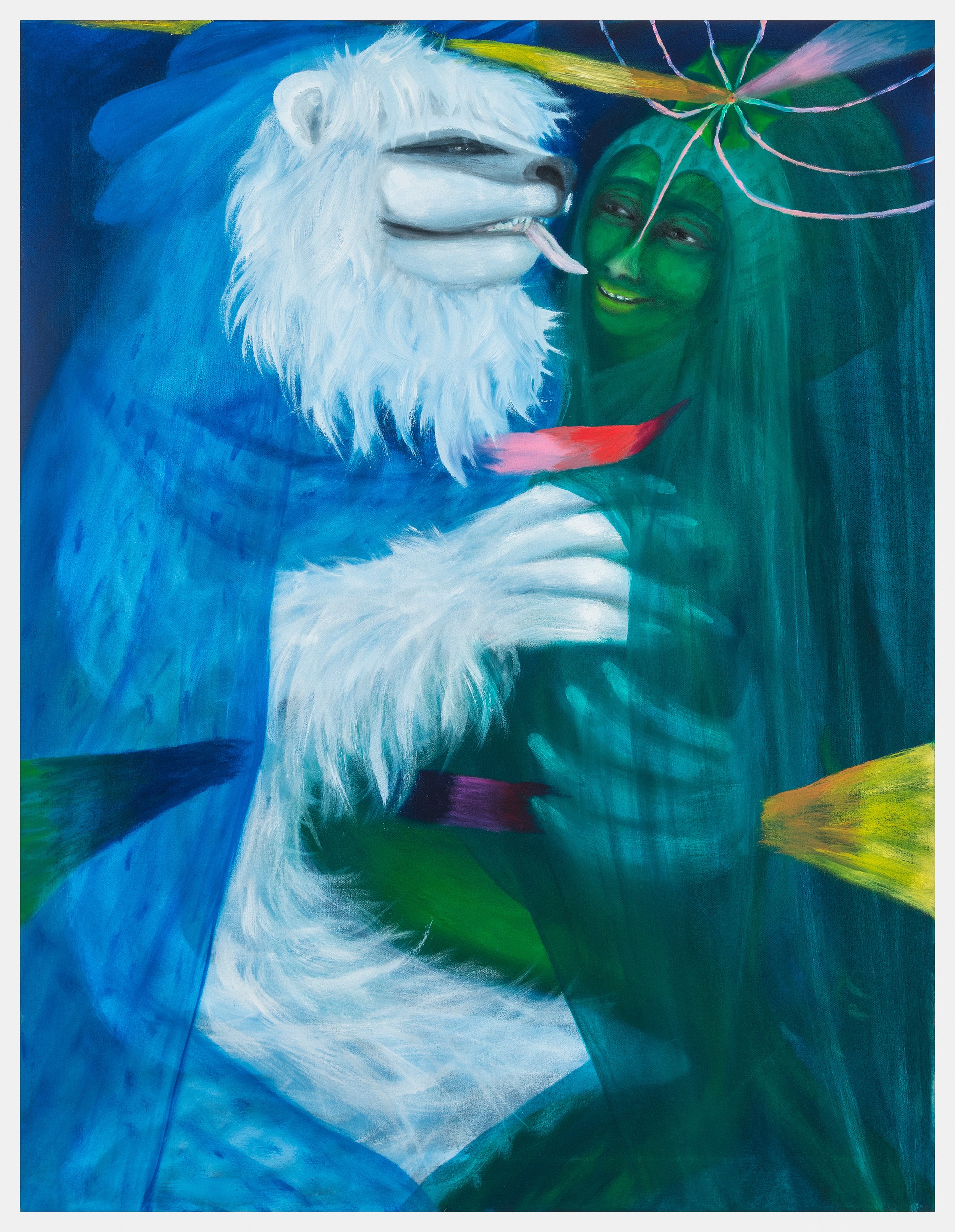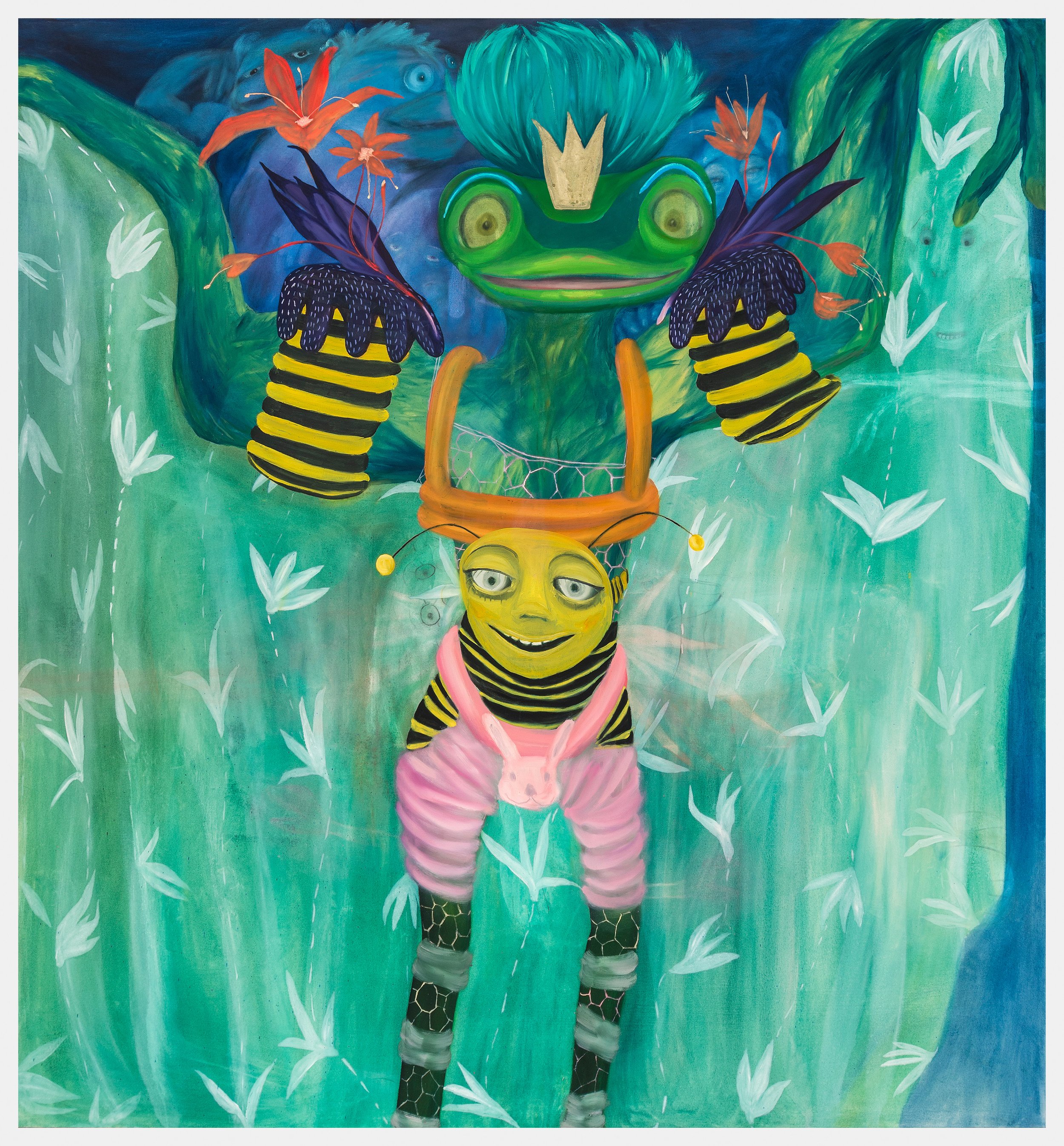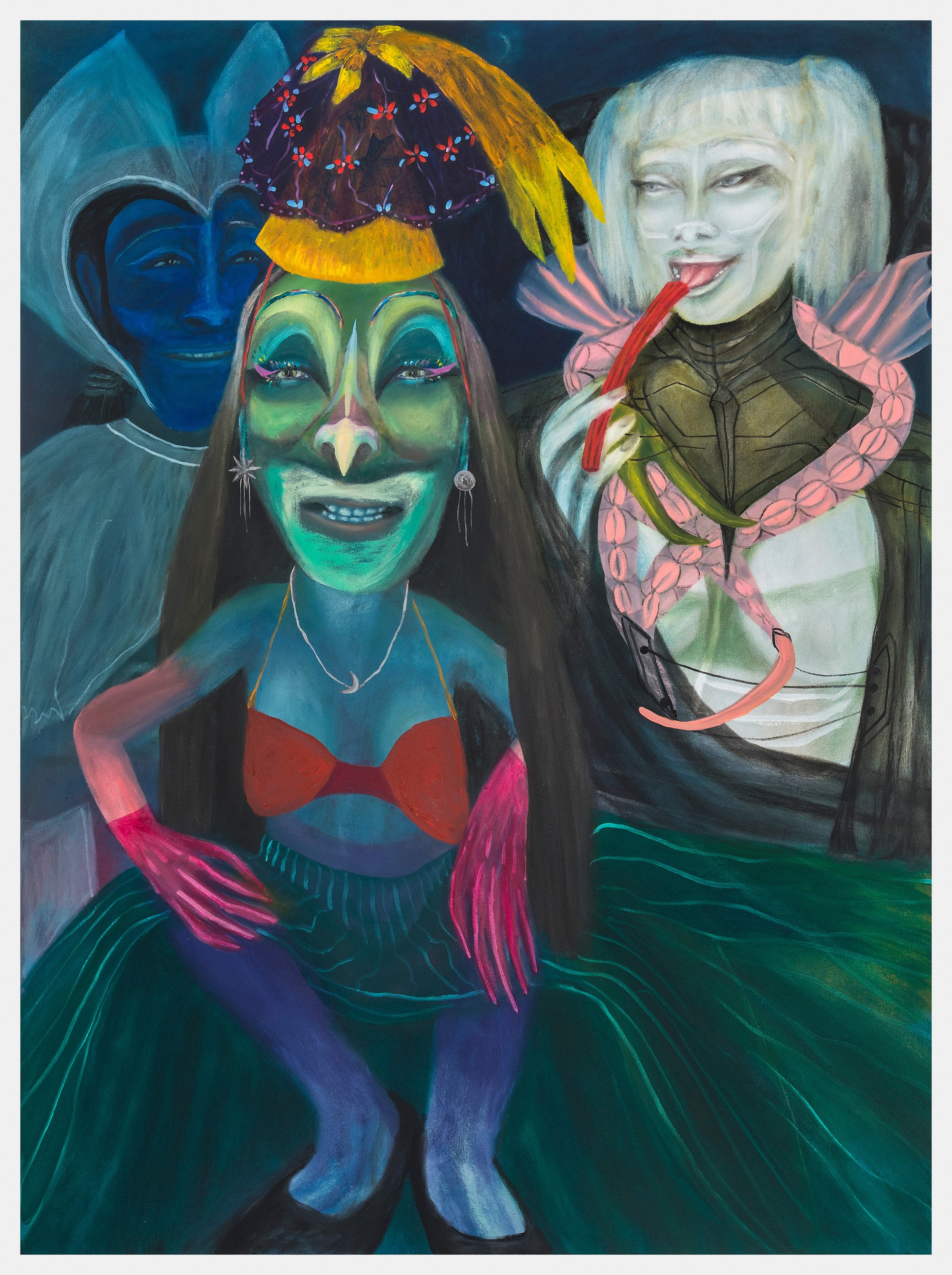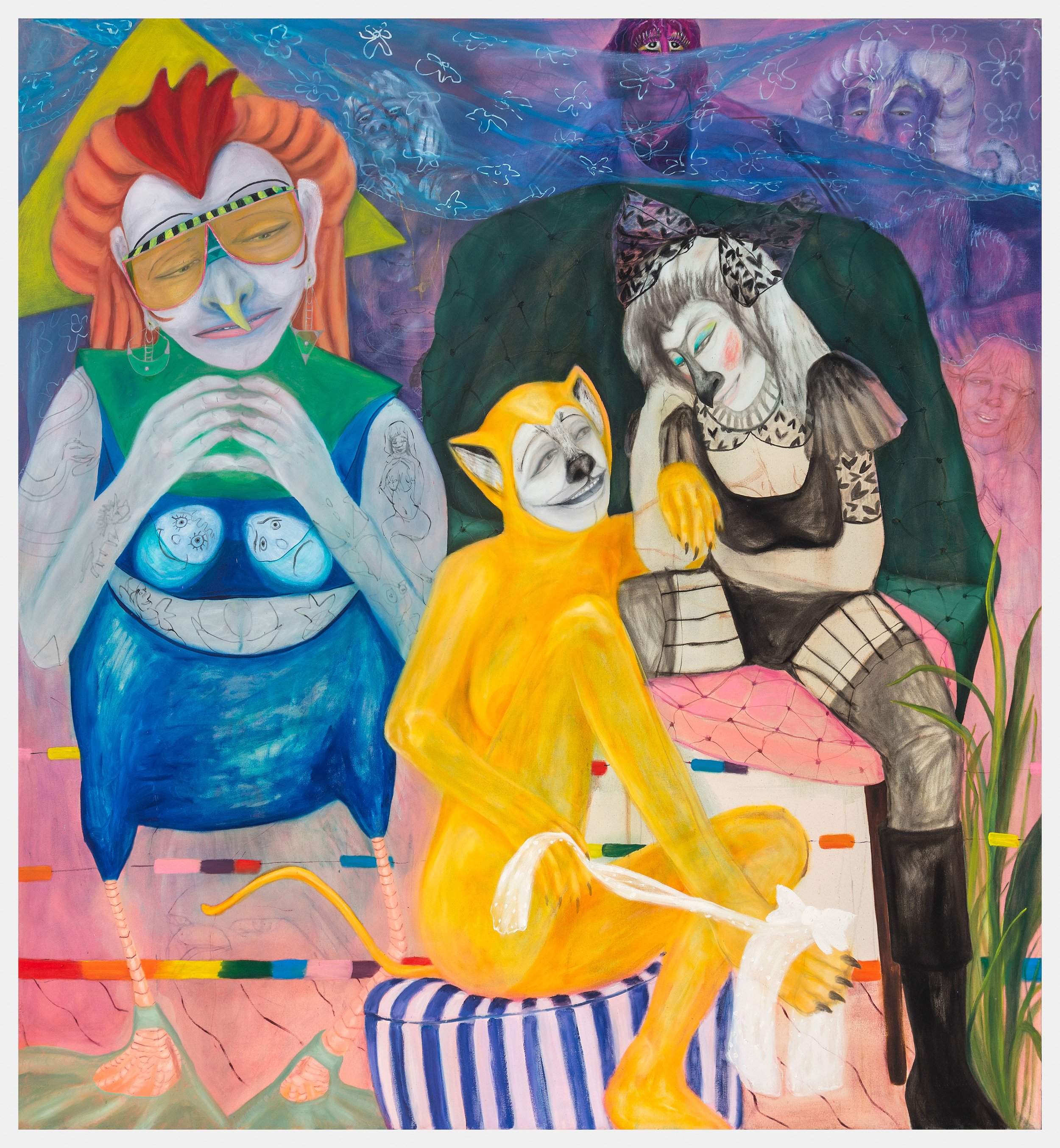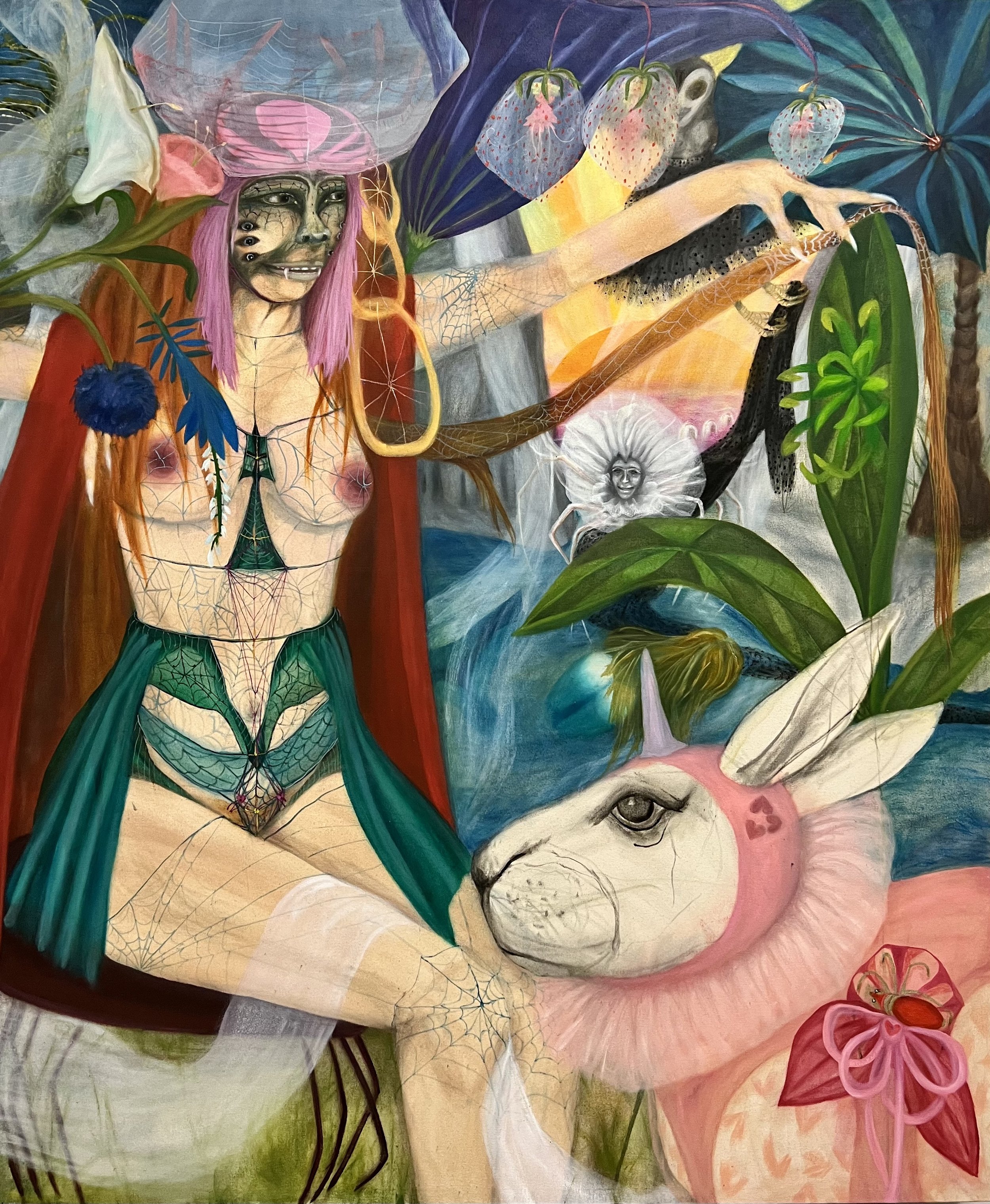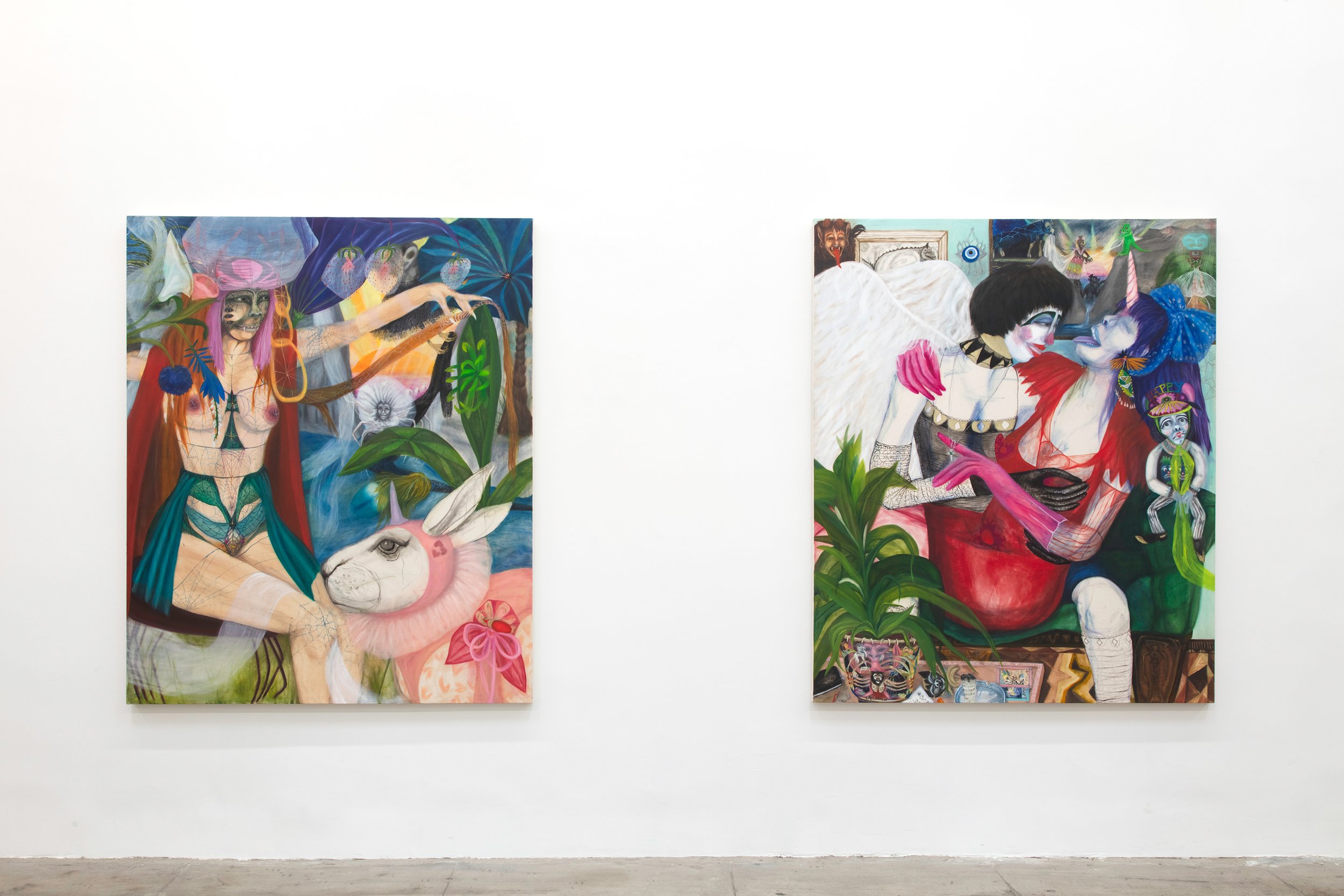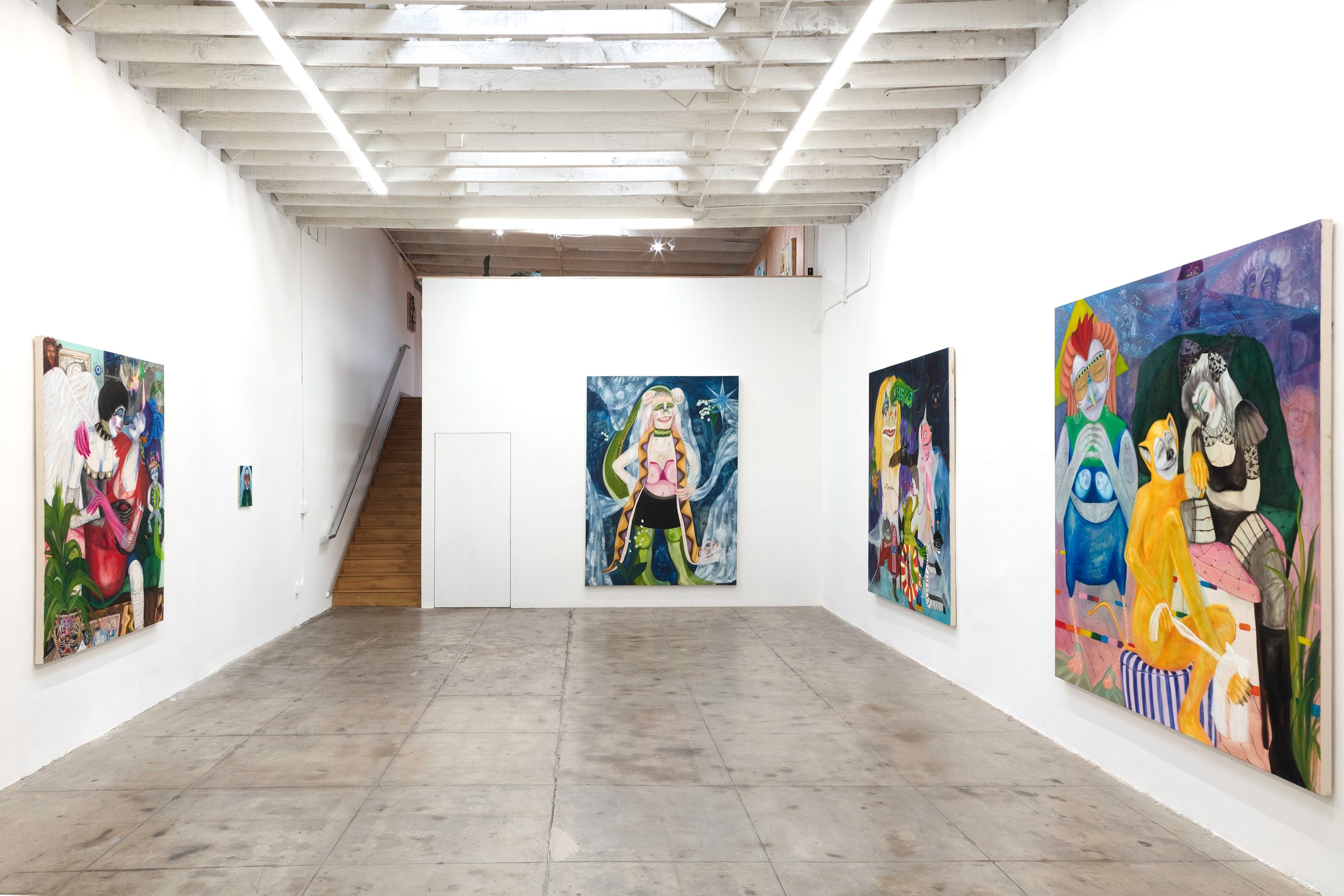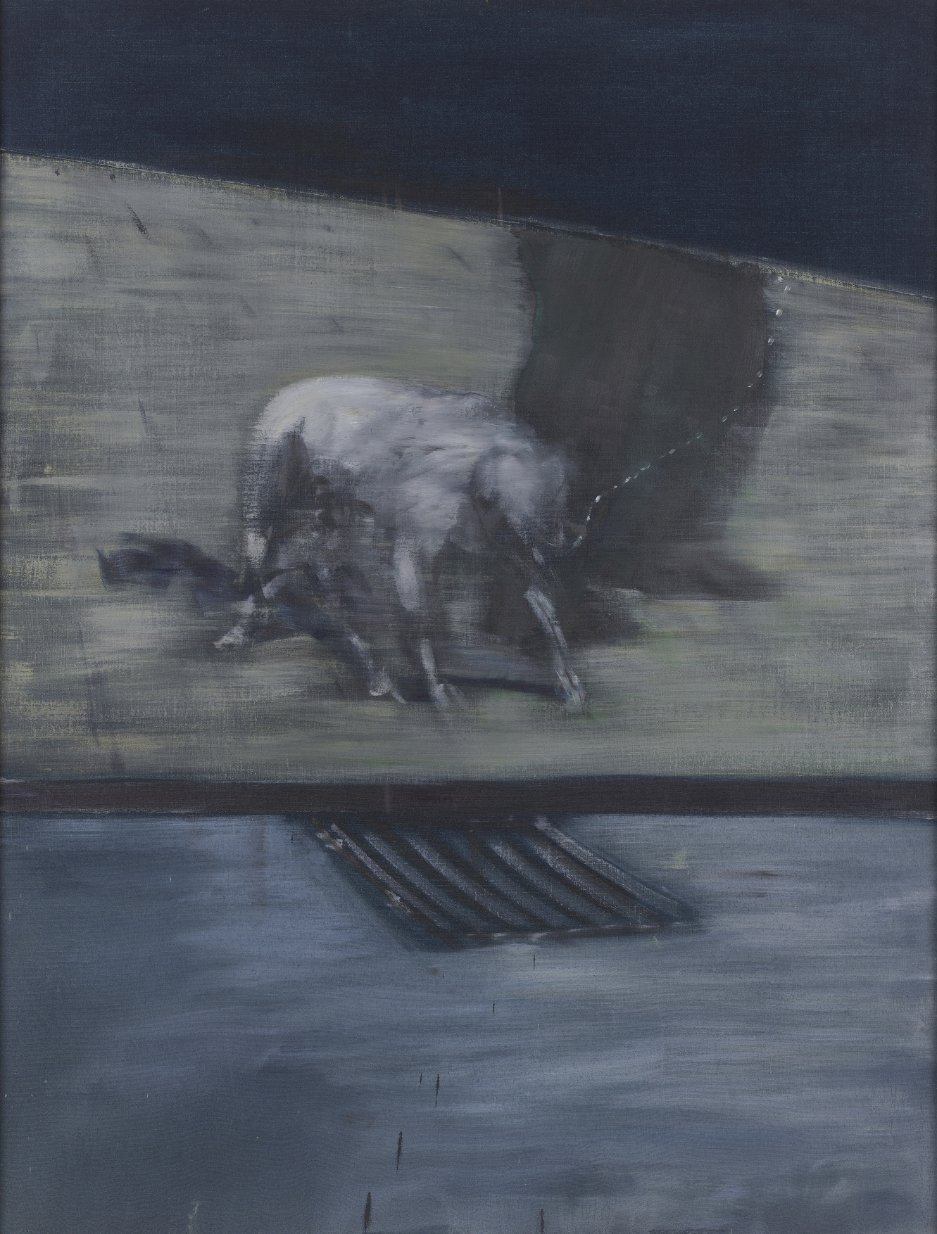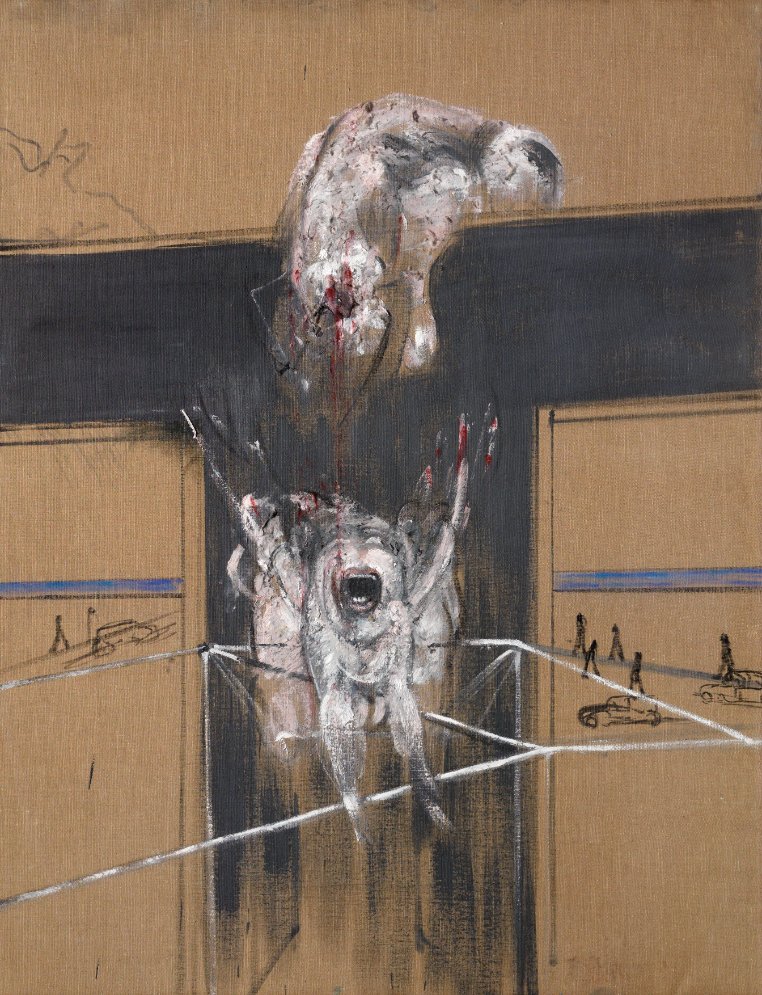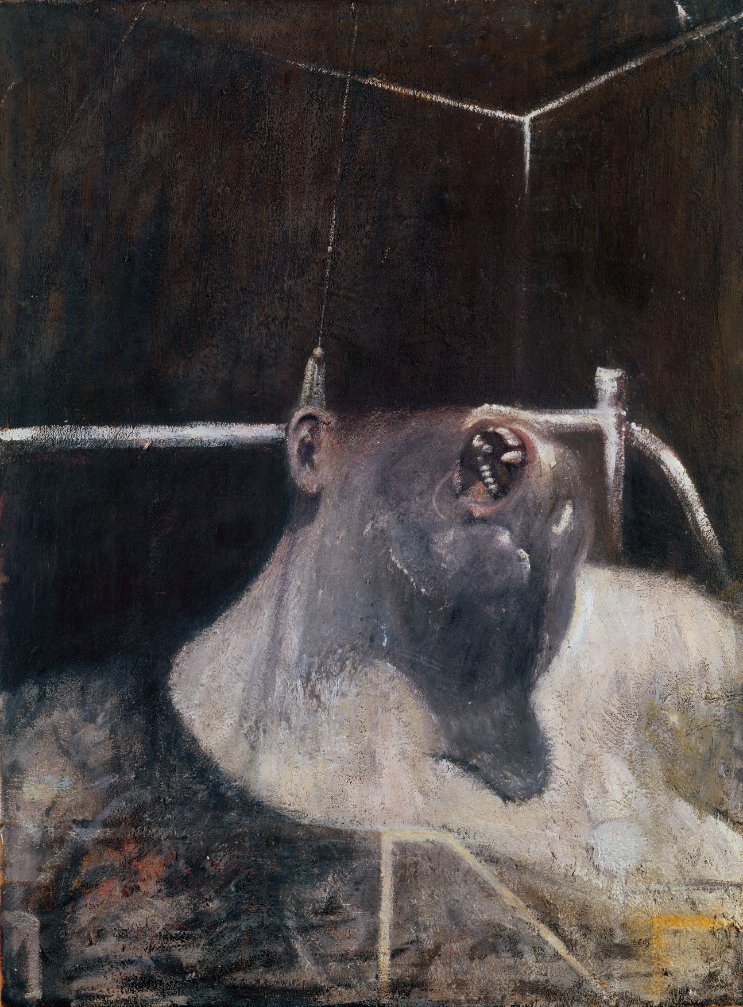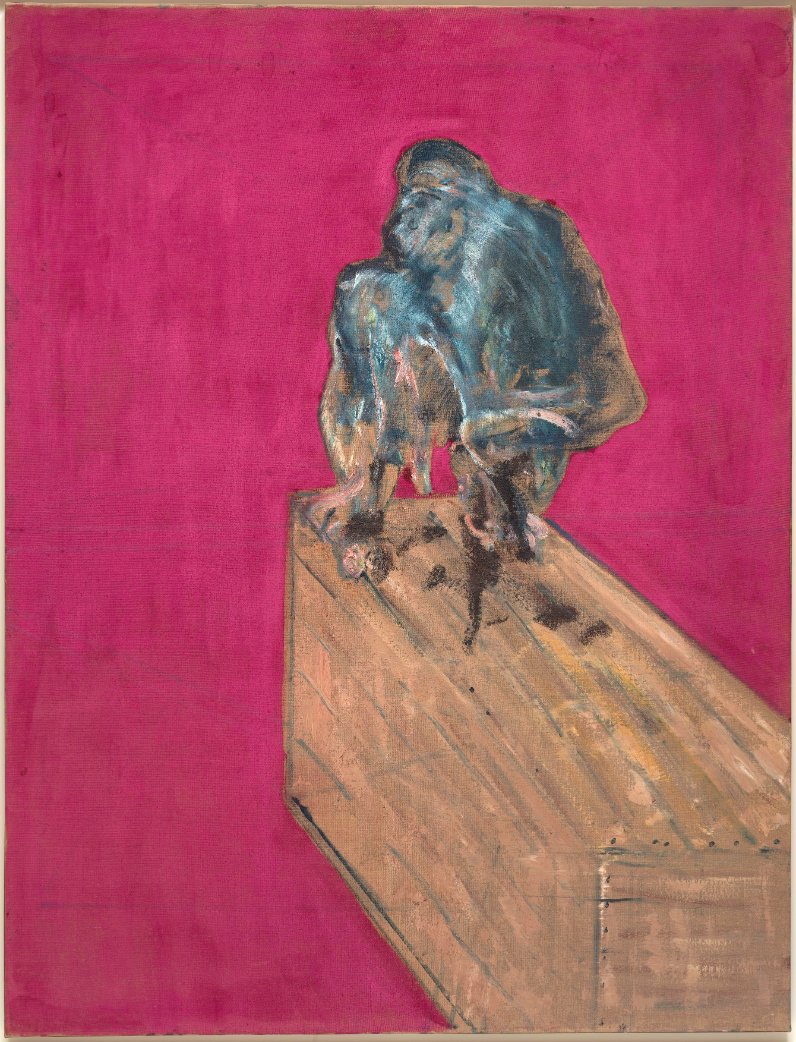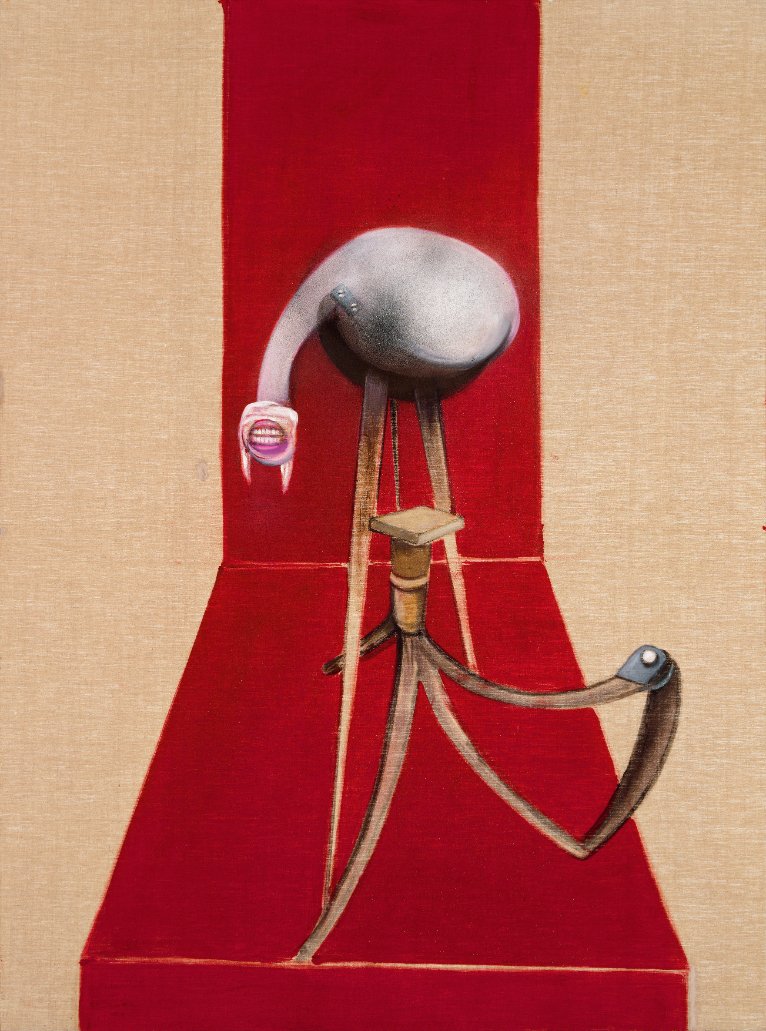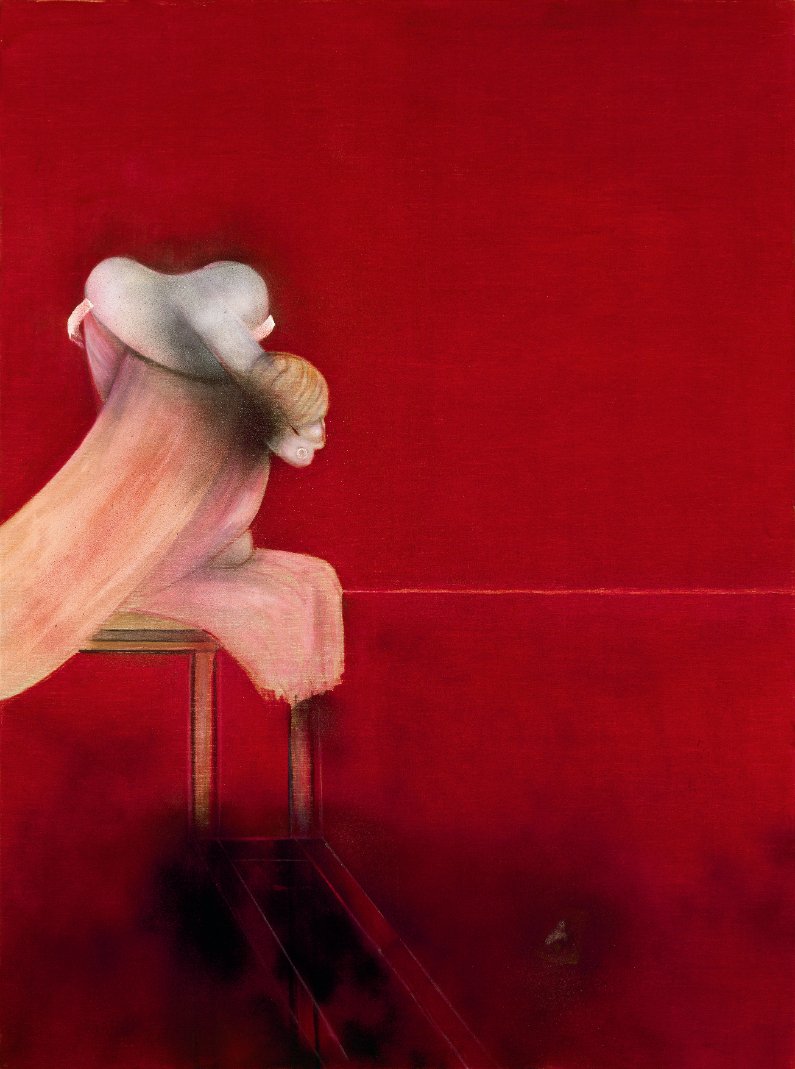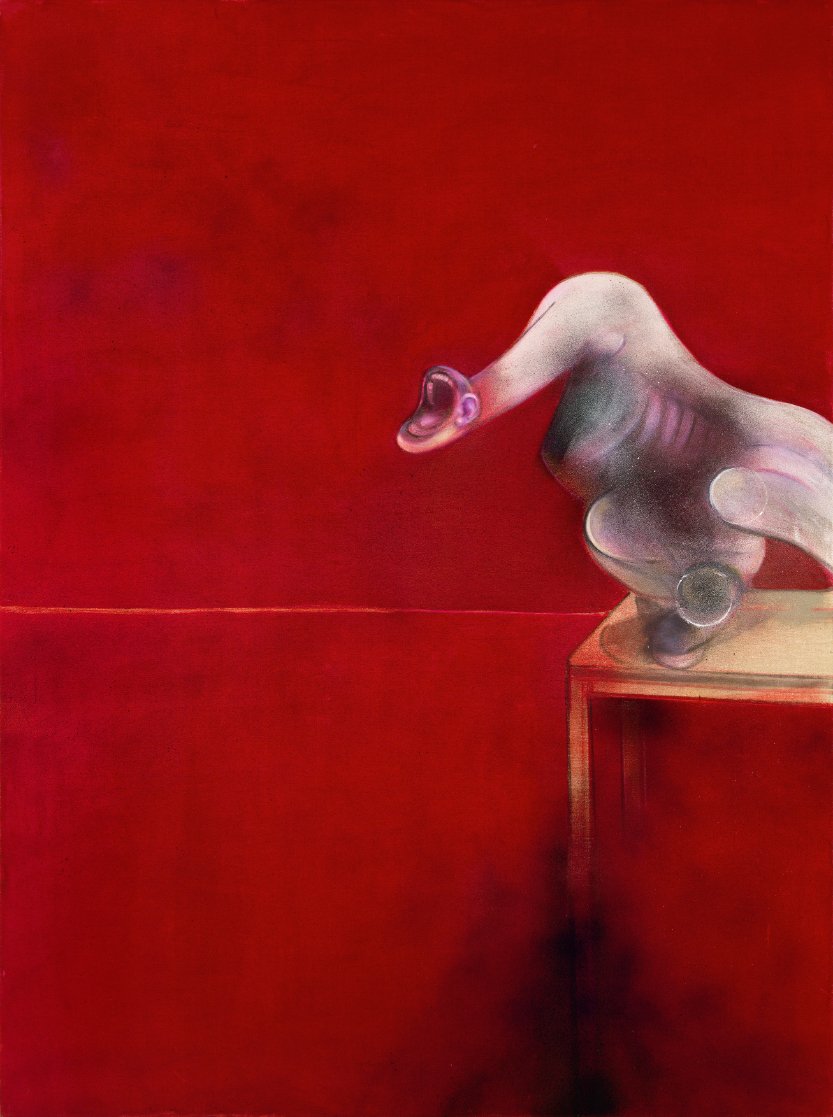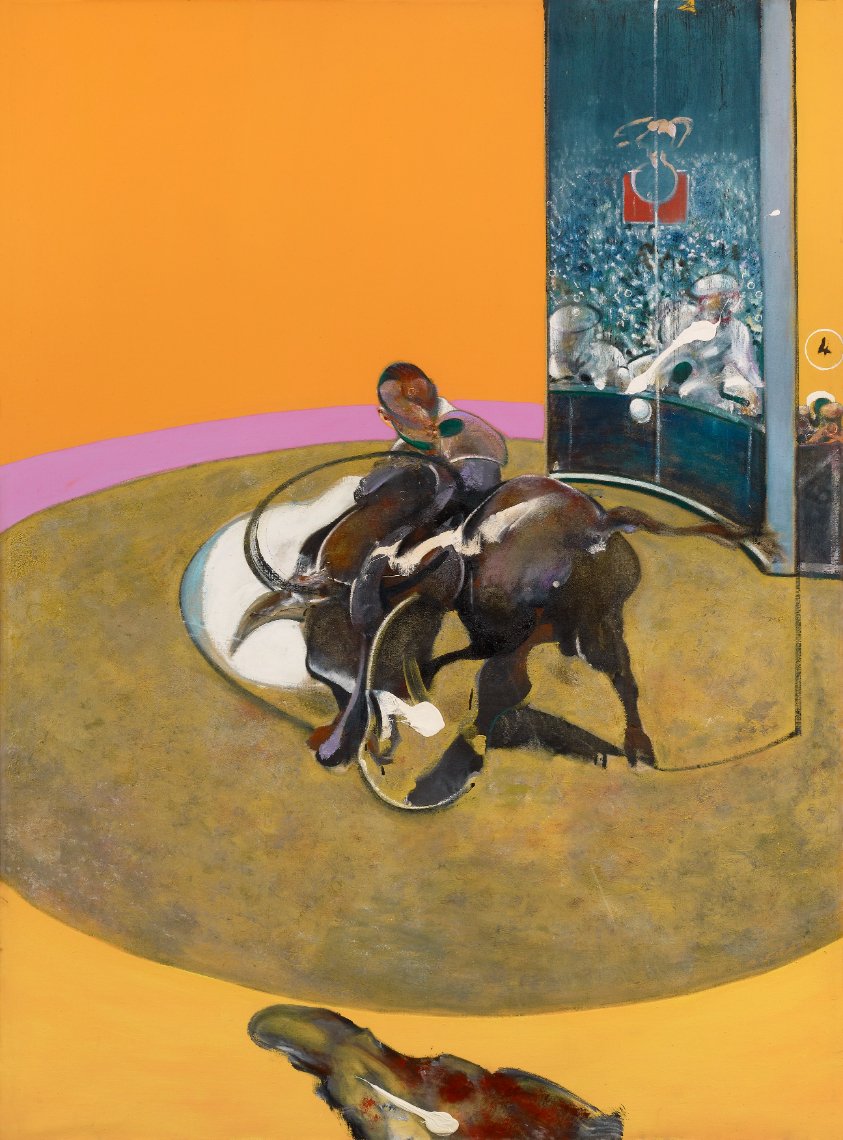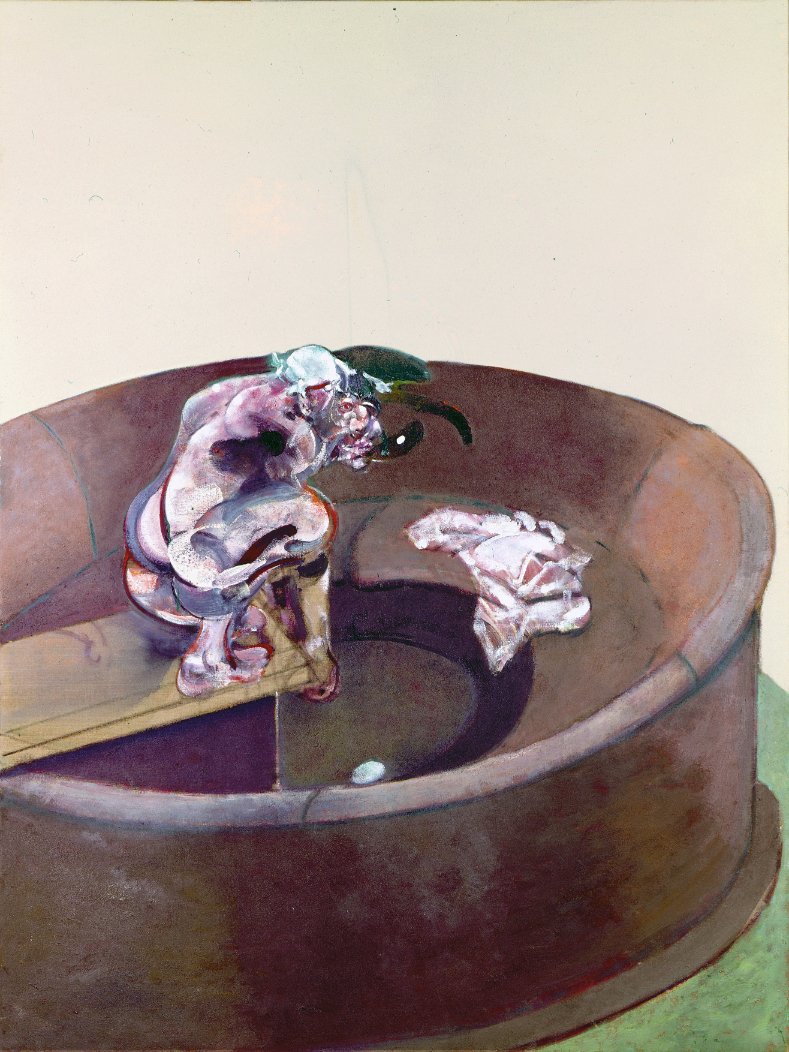Lydia Maria Pfeffer presents new paintings that depict a queer cast of characters as well as their seductive and strange worlds. Drawing inspiration from mythology, shamanism, and anthropomorphism, Pfeffer playfully revels in art historical motifs and religious iconography. Set against earthly and other-worldly backdrops, the occult-like figures in this series dwell in both familiar and celestial landscapes. Pfeffer’s fantastical worlds are inhabited by bold figures who embody queer sensuality, femme kinship, and gender fluidity, through the expressive language of painterly symbolism.
With a cheeky nod to the sexualized female figures of Austrian Expressionism, like those of Egon Schiele and Oskar Kokoschka, Pfeffer similarly charges her subjects with a raw femme sexuality that verges on the grotesque. However, unlike these historical representations of the sexed femme body—so often fraught with the confines of modernity and the male gaze—Pfeffer’s specters are fully self-realized. They refuse the bounds of their own frames. Connecting familiarity with fantasy, and femininity with ferocity, Pfeffer’s works hover above the axis of desire itself. Lily of the Valley rejects painting’s inherited traditions of the patriarchal gaze and boldly asserts the power of a self-actualized queer eroticism.
Lydia Maria Pfeffer is in conversation with Trulee Hall in our forthcoming Body Issue. The following is an excerpt from the full interview:
LYDIA MARIA PFEFFER: I do believe there's a spirit world out there, and I do believe that everything is alive, and I mean that down to the soil. When I make these paintings, they are almost a weird channeling. Of course, it’s my subconscious that creates these images. But, I start painting with some washes or lines, then the figure develops, who then invites the other figure, and they're all grabbing each other and taking each other to the party. It's almost like I’m asking, “Alright, who else do you want? What else do you want? Oh, you want a little thing there? Okay, cool. Who else is coming to the party? Okay. There she is.” I'm almost being told what to do. It takes an openness, and a willingness to trust yourself, and trust the process. You go in and give yourself entirely over to the painting. Often, I paint the entire thing, and I have no idea what's happening. There's a lot of Jung’s idea of collective unconscious in there, which says that your fears and your desires are predetermined. These archetypes that we all embody determine what we fear, or revere, or need, or want in order to develop.
TRULEE HALL: I totally relate. I also use the channeling. I get the mood right. I have a canvas, I got my music going, and the rest just unfolds. I don't think it through ahead of time. Sometimes I'll start with one idea or an inspiration, but it's a relationship with the work. In your case, you're very brave, and you're also unapologetic. Your work comes from a very authentic place and it really jumps off the canvas. I don't even think of them as paintings because they just seem to exist. It feels like it flew out of you; like it's supposed to exist.
Lily of The Valley is on view through April 30 at Ochi Projects 3301 W Washington Blvd, Los Angeles

